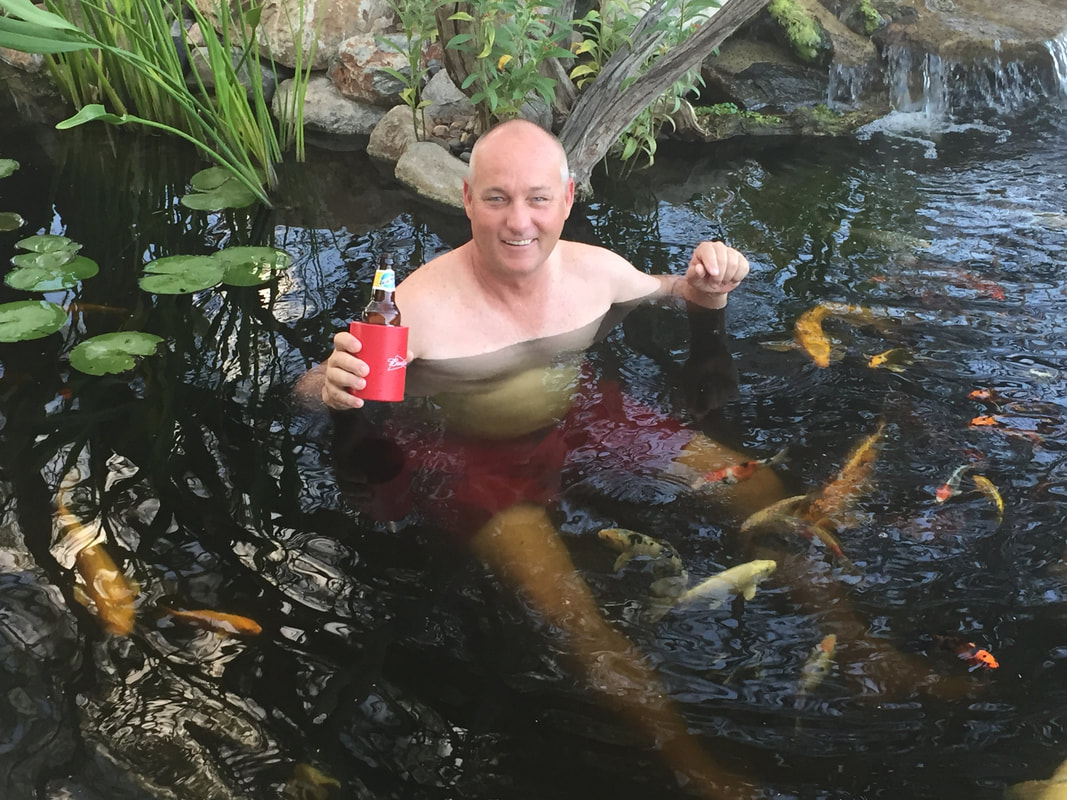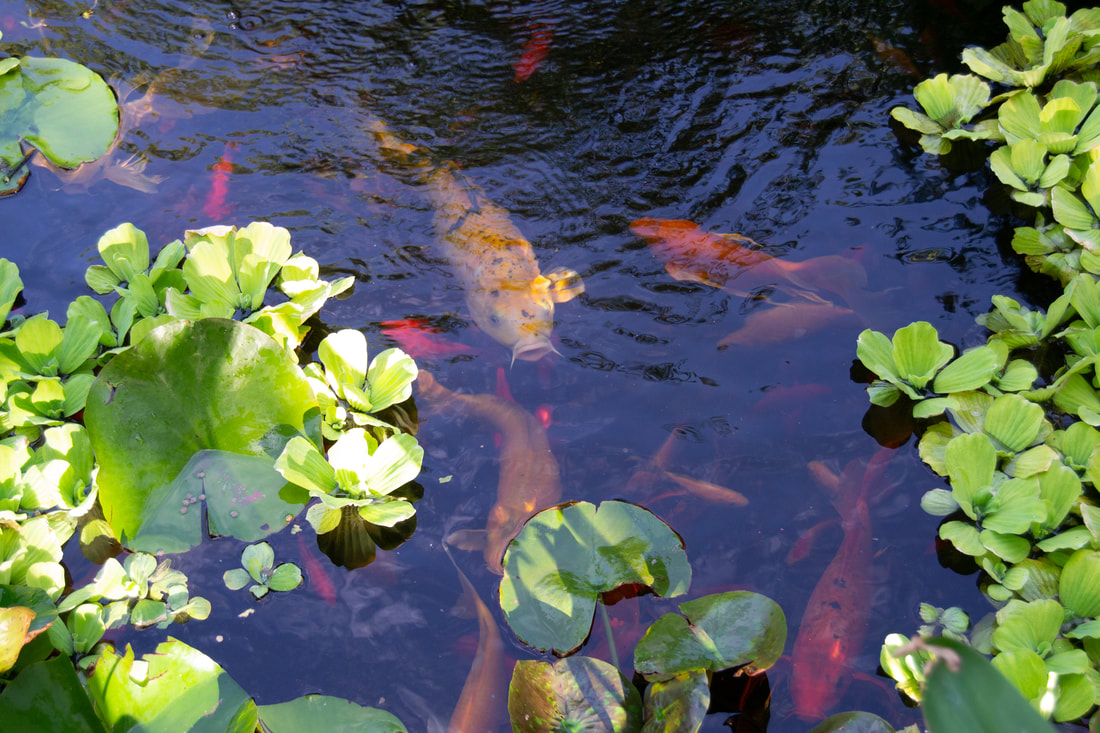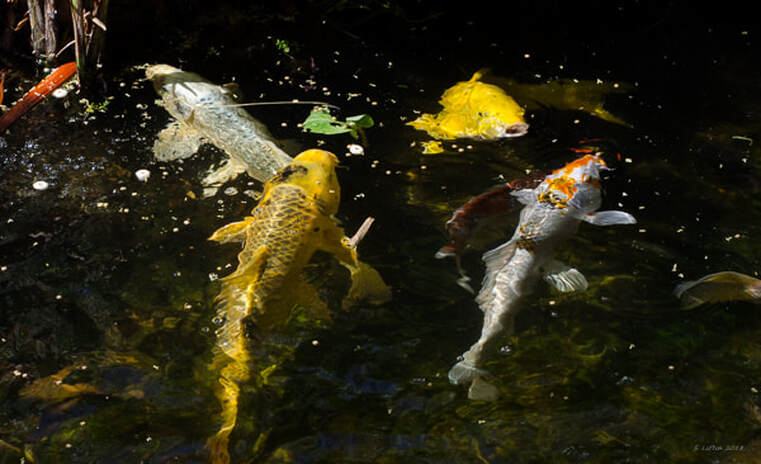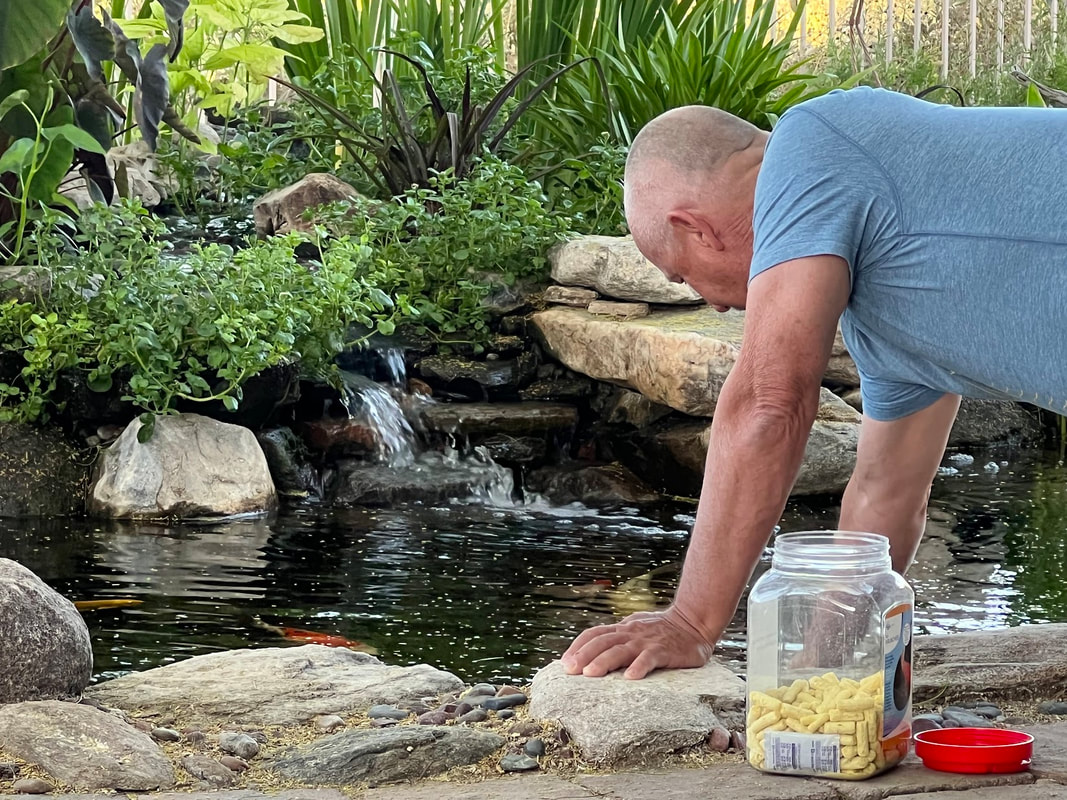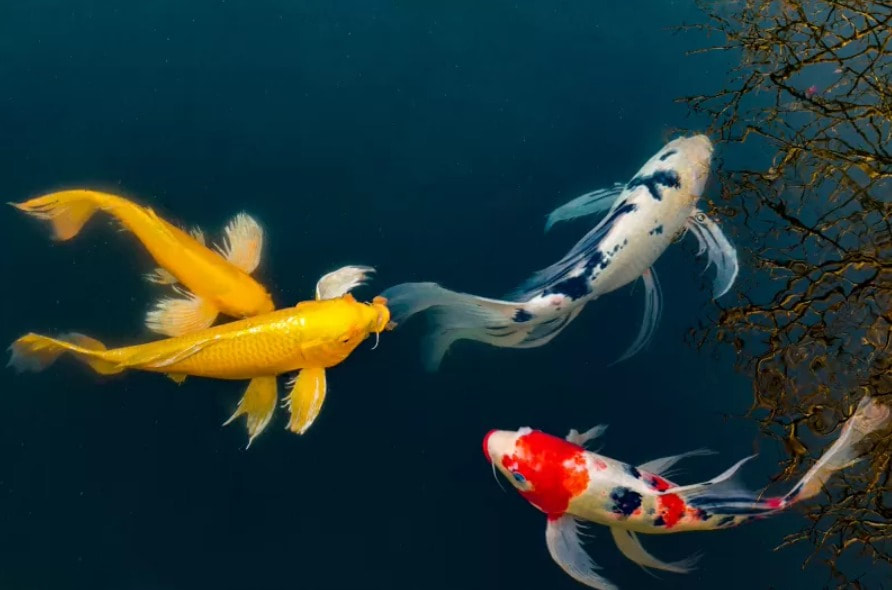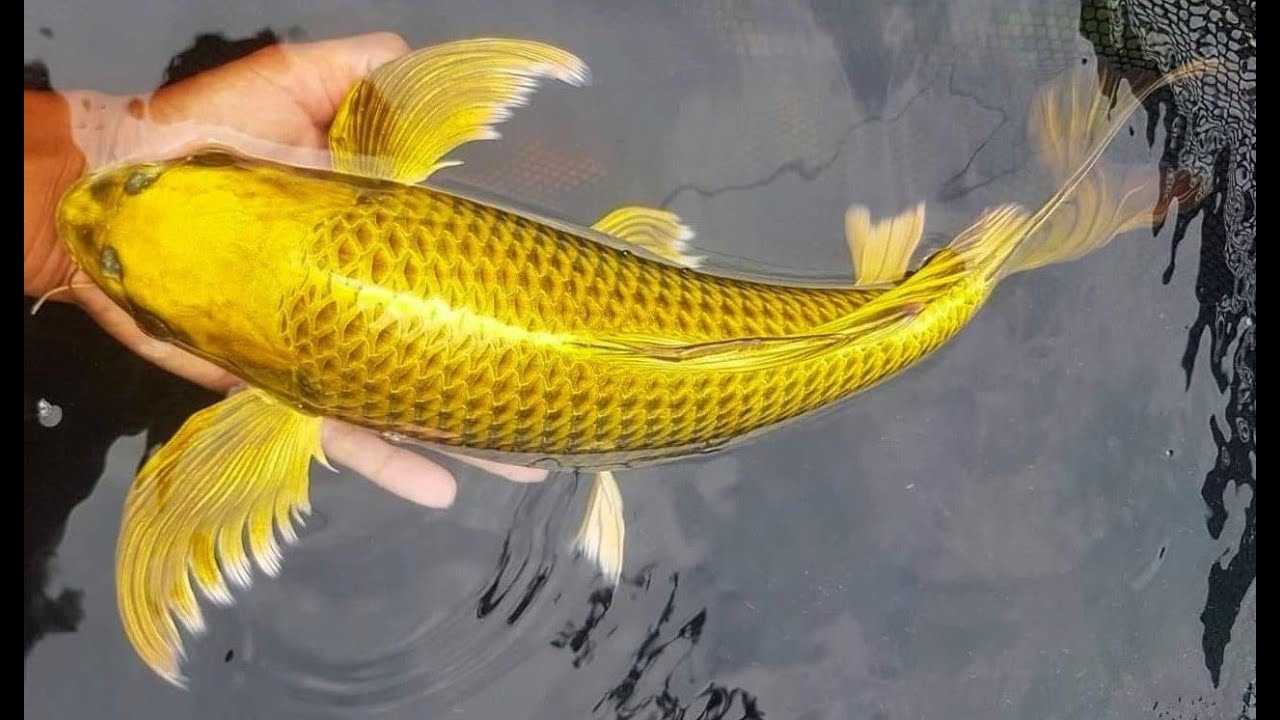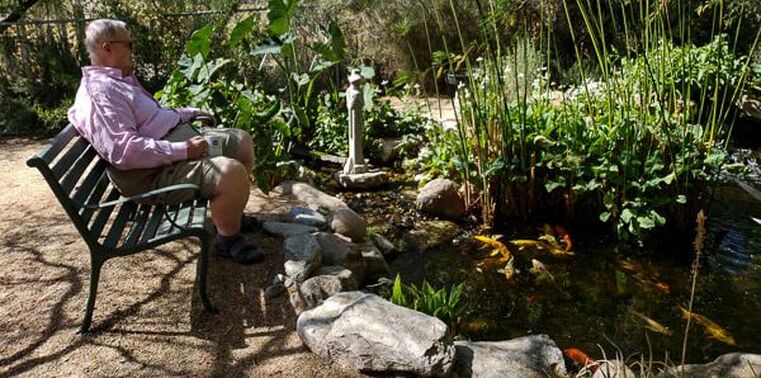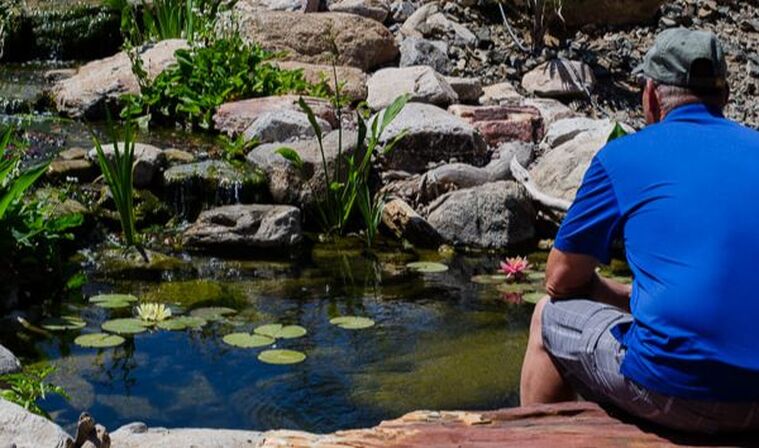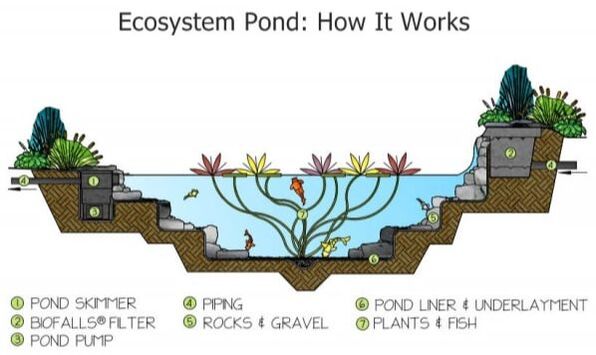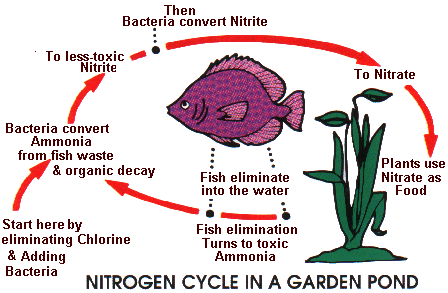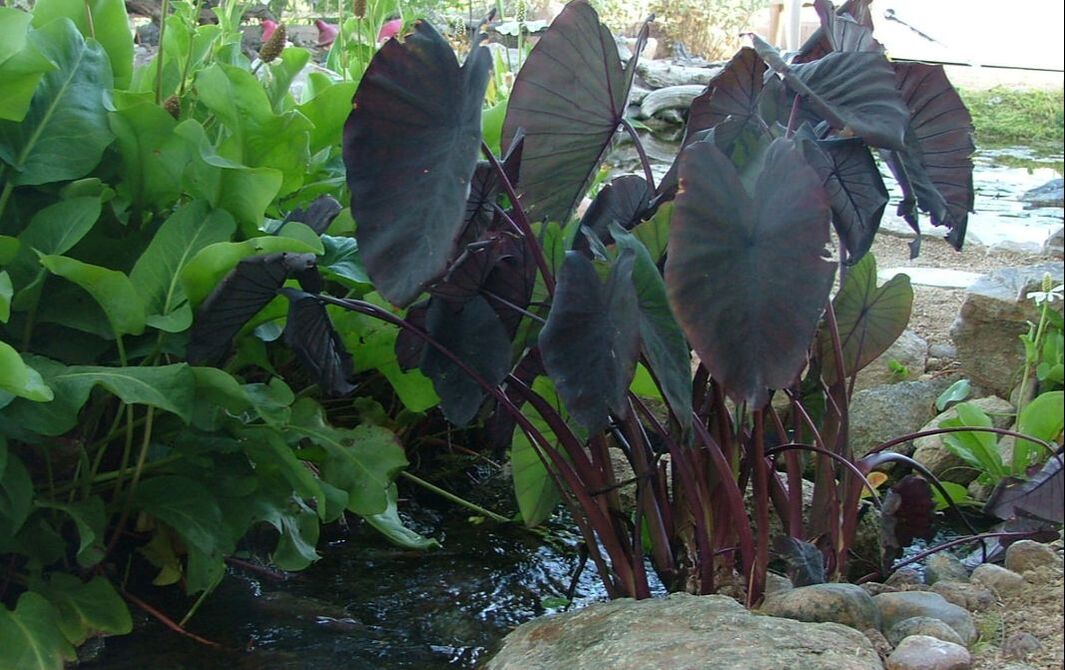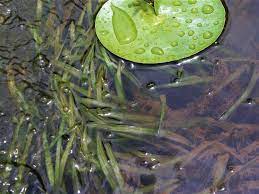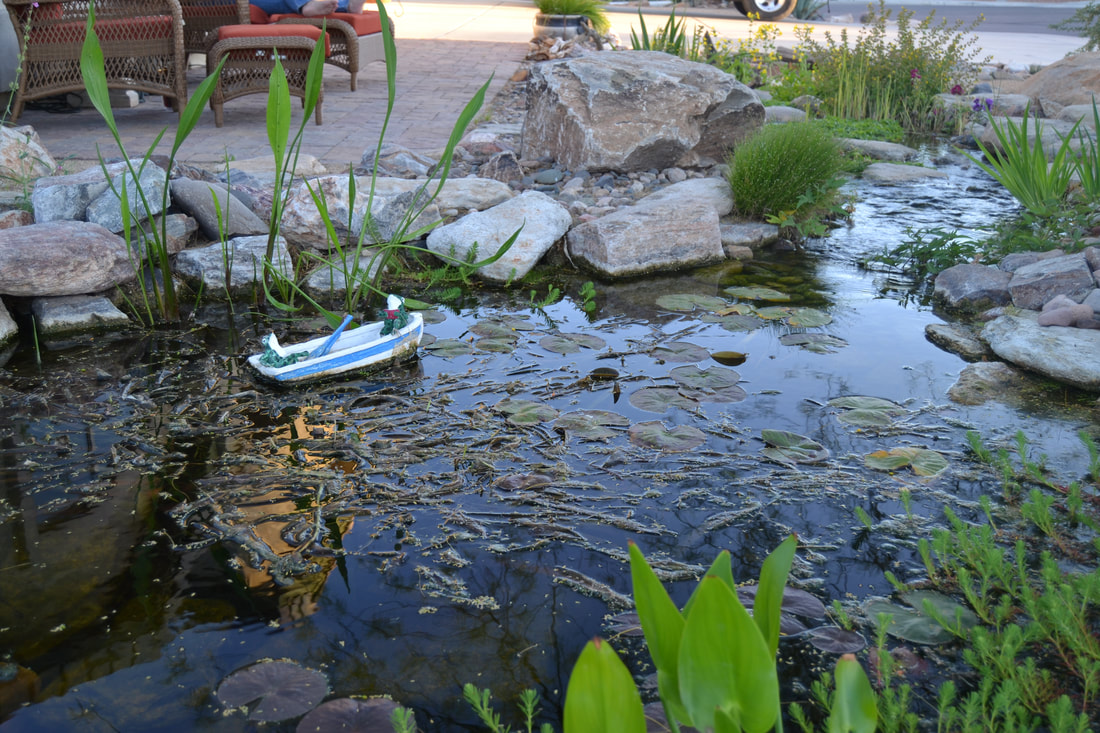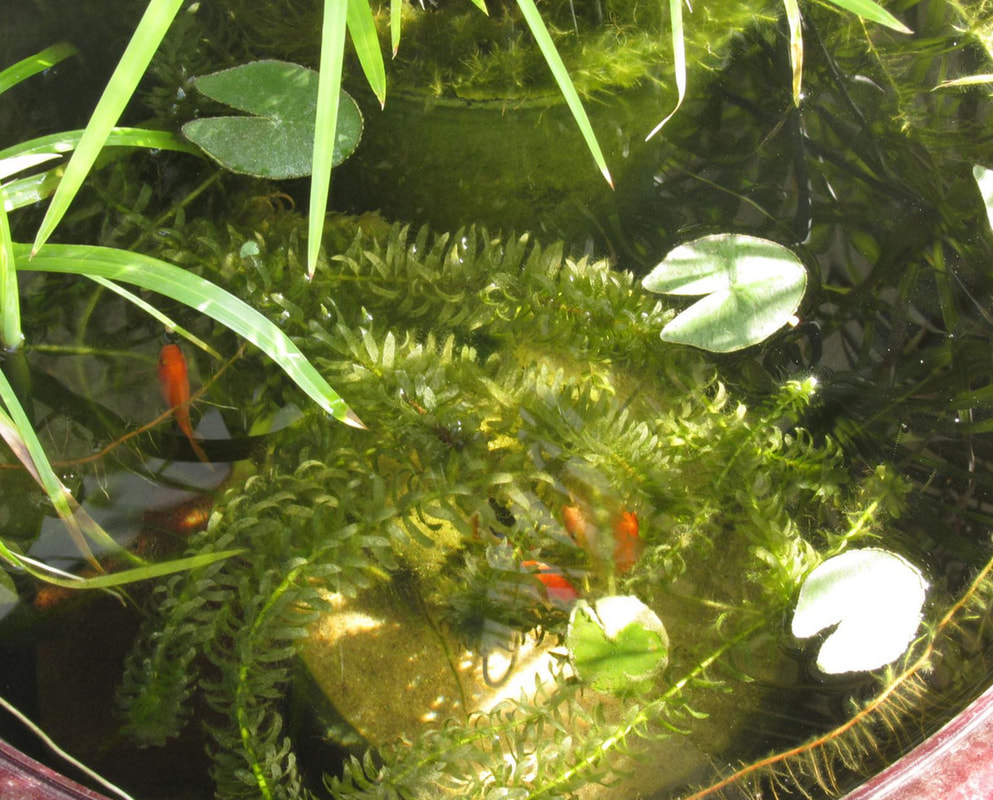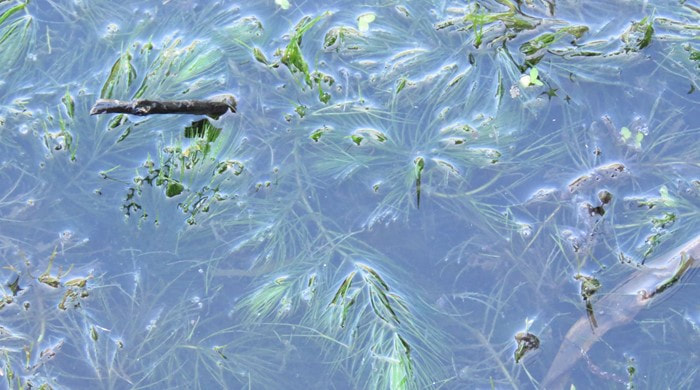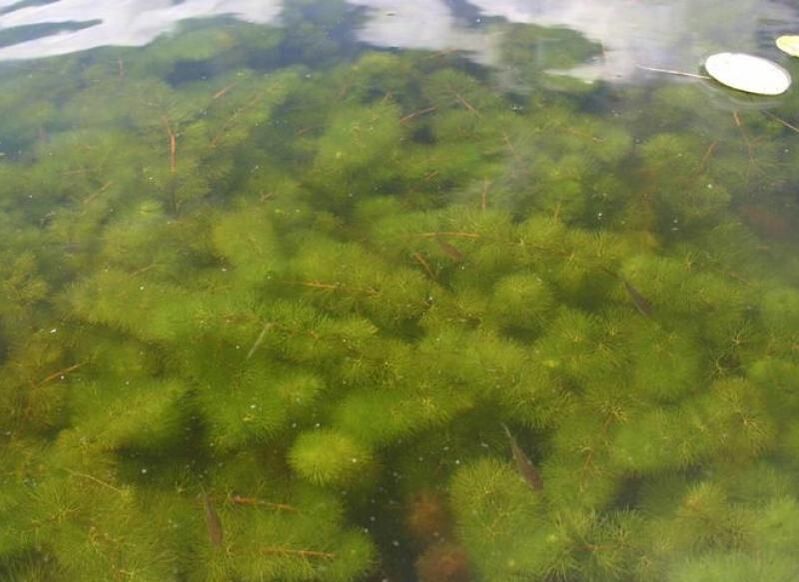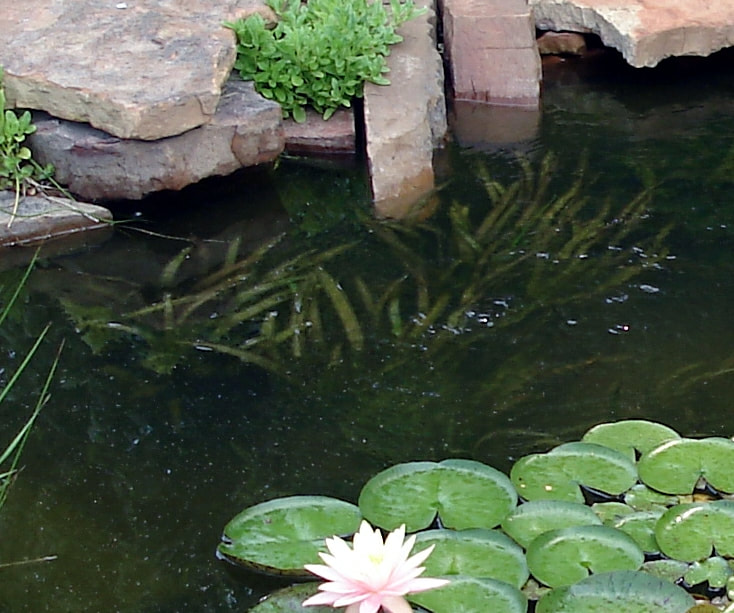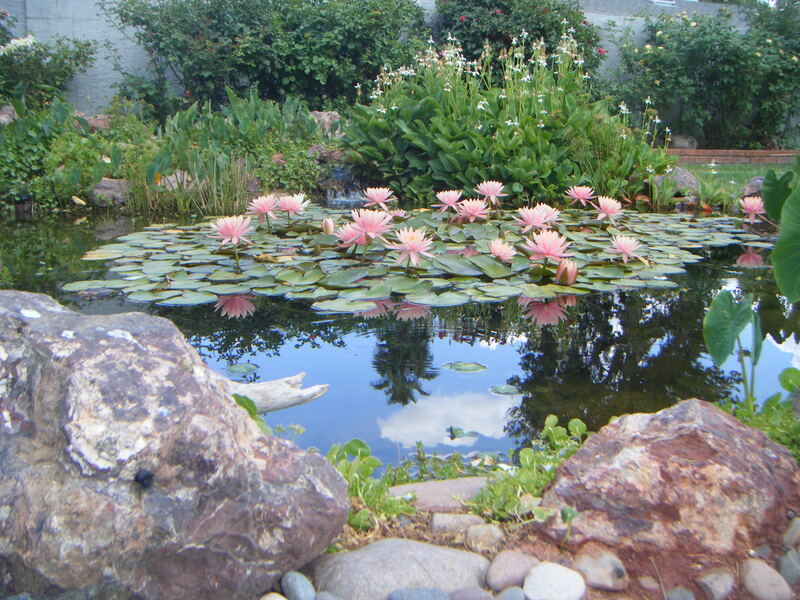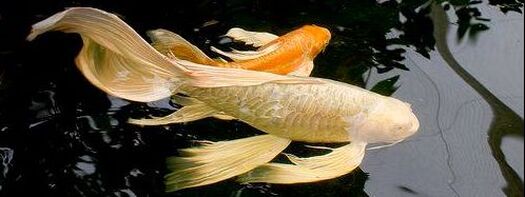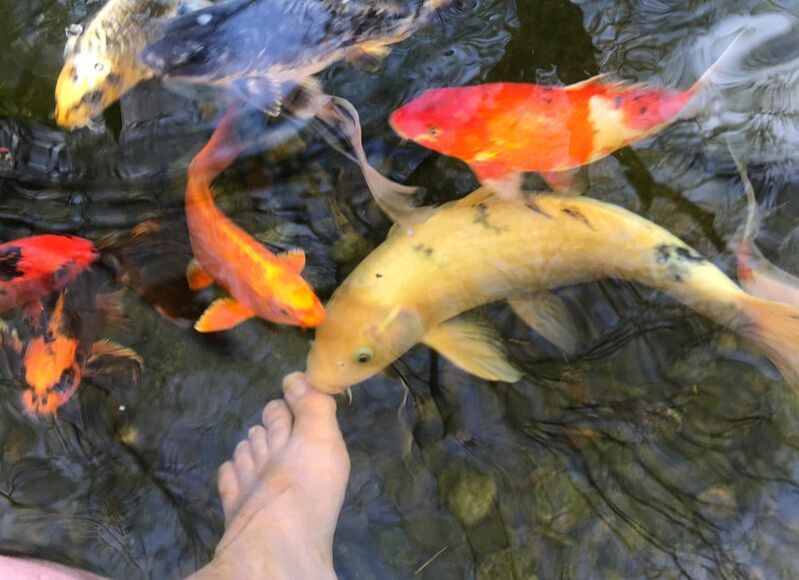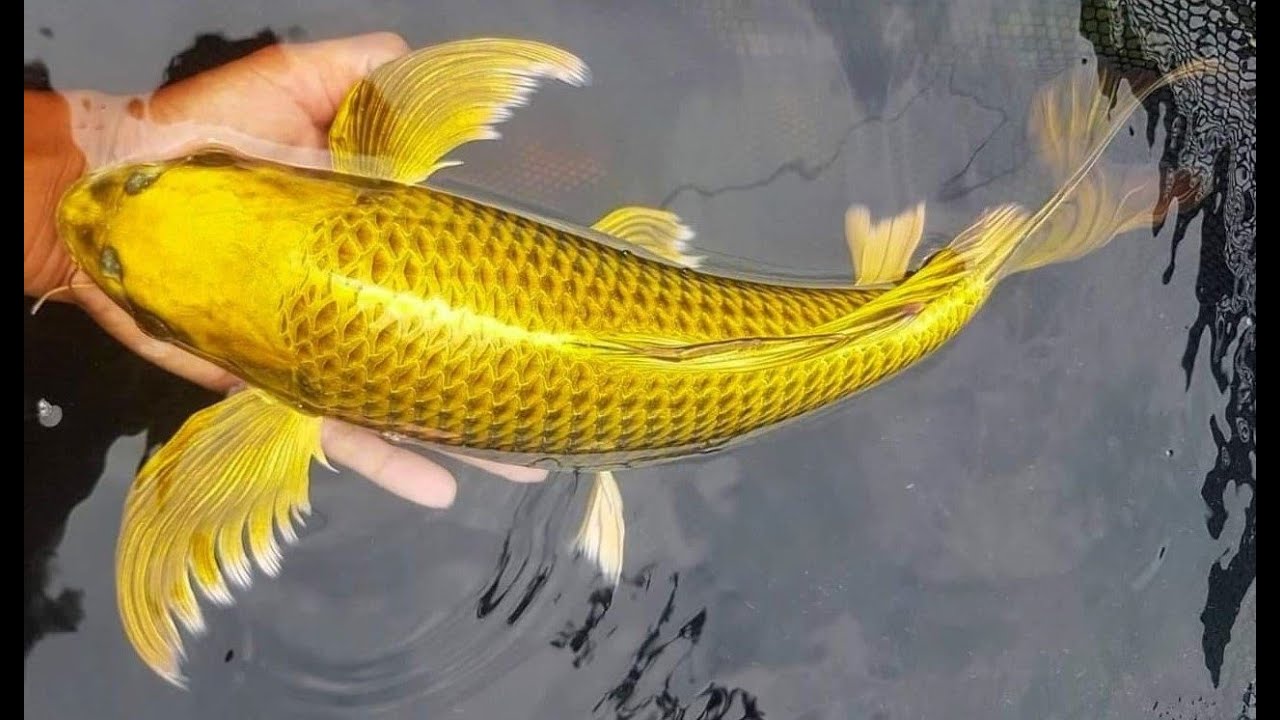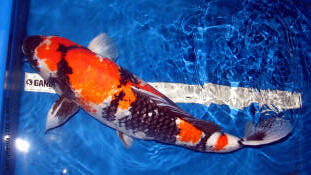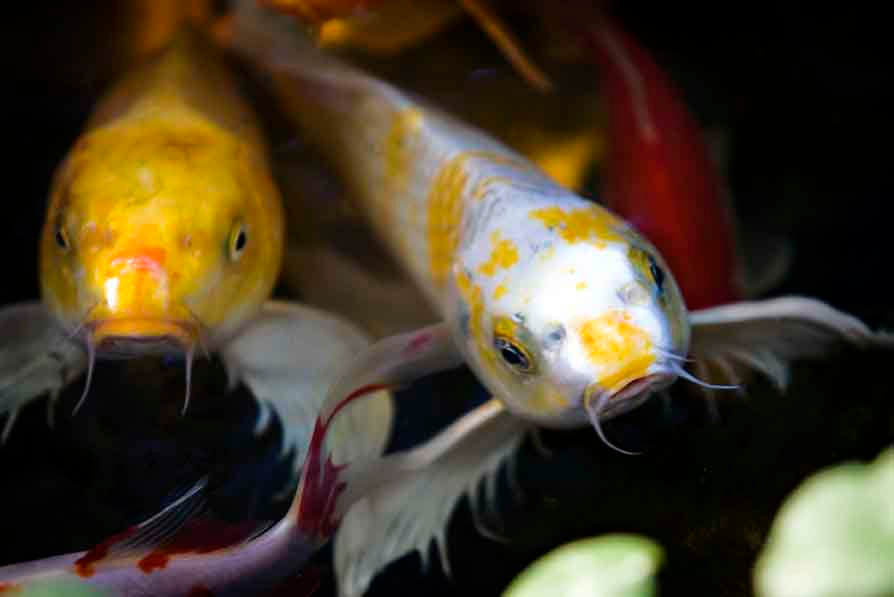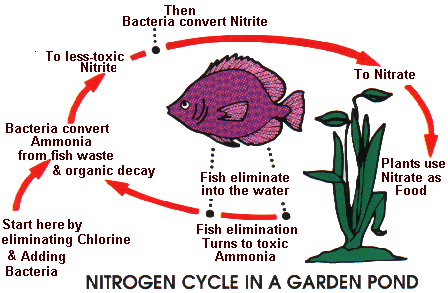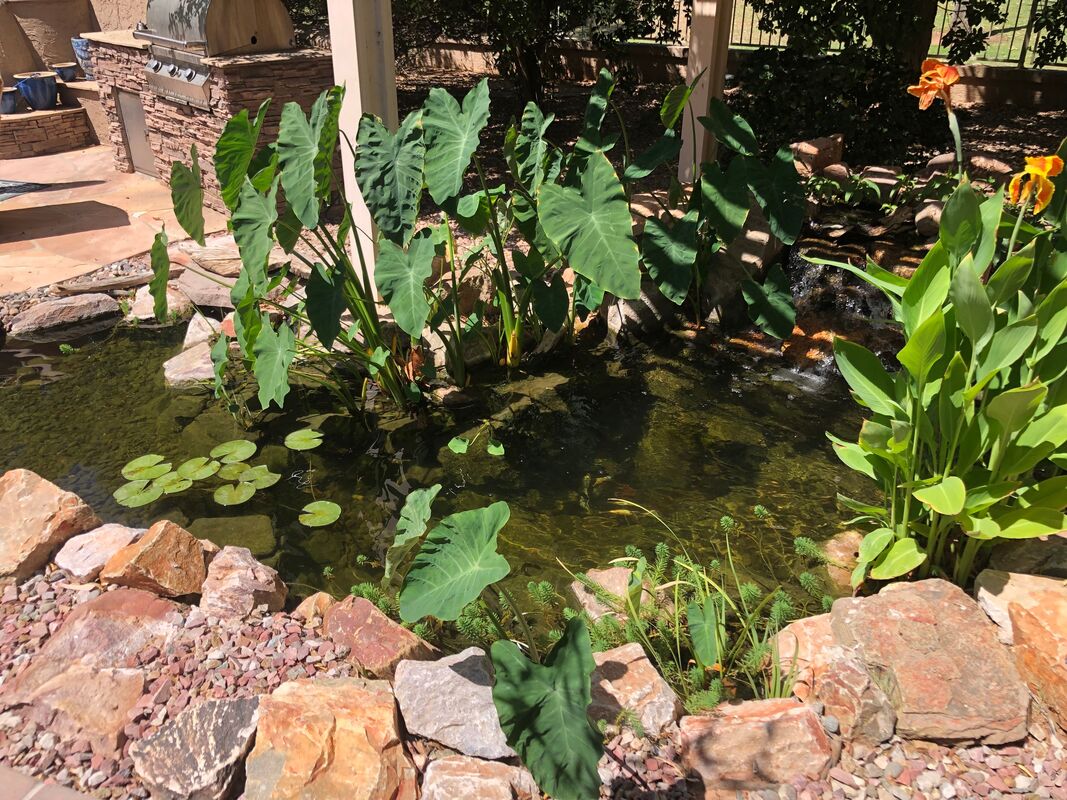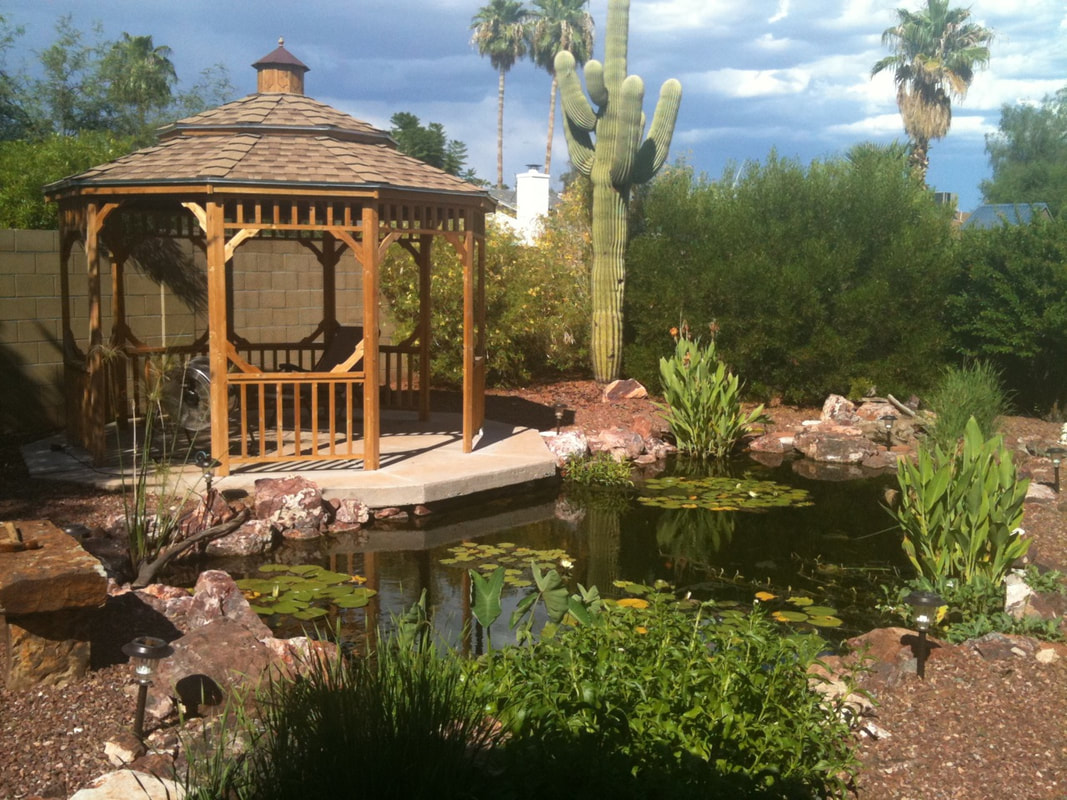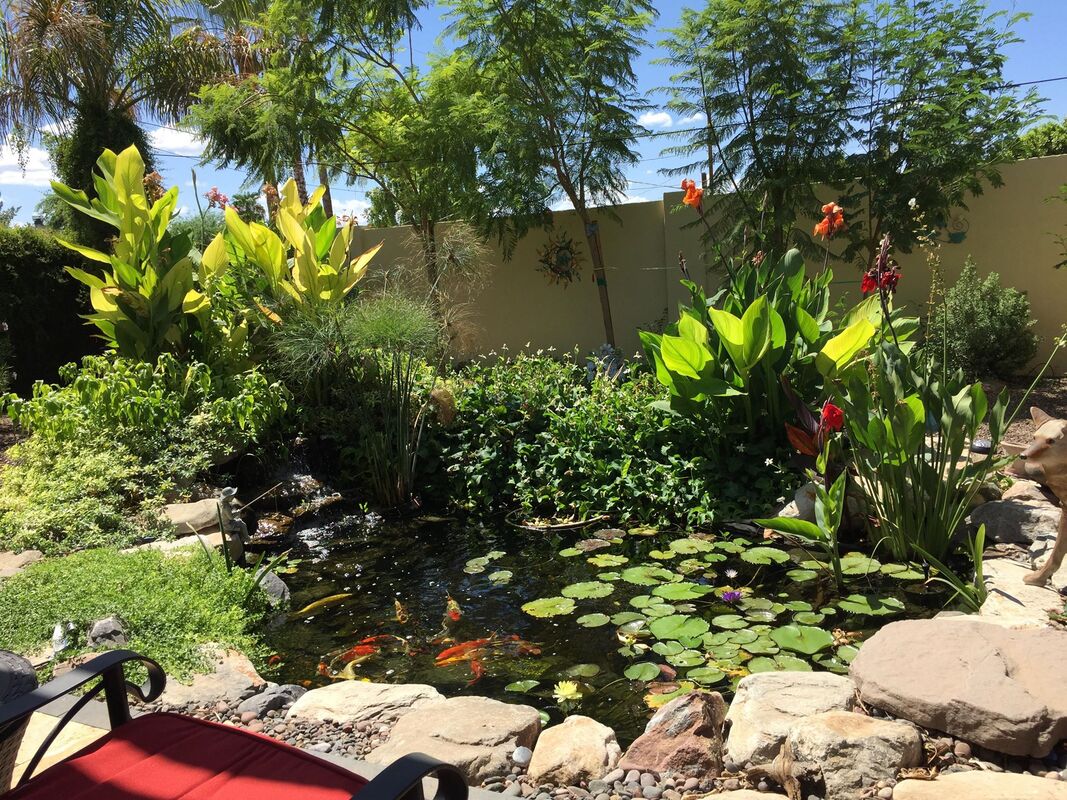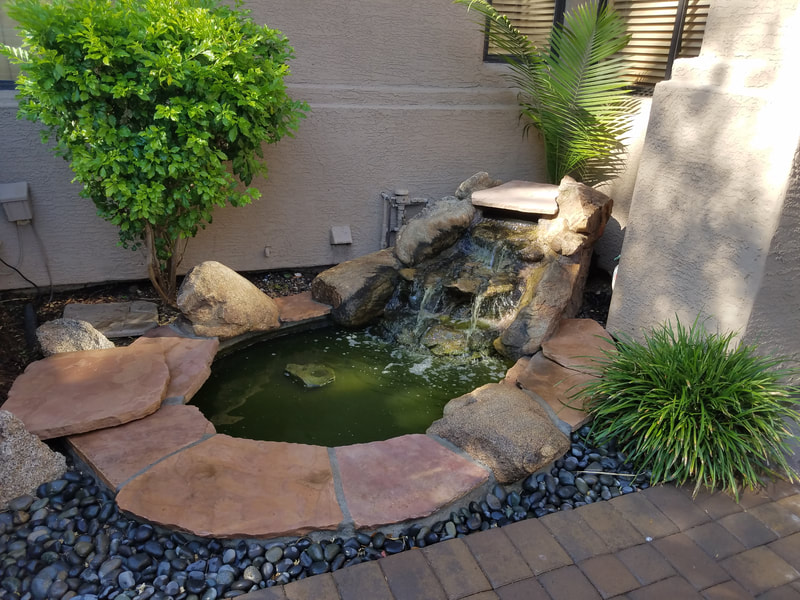|
Whether you’re new to koi ponds, or have enjoyed a pond for several years, you’ll want to know about three basic rules that will help you create and maintain a healthy habitat for your finned friends. We want fish to be happy and your water gardening experience to be as enjoyable as possible. Once you become familiar with your fish and their basic needs, you’ll be well on your way to enjoying the full benefits of living with a pond. 1. Fish Need Clean WaterYour pond water should always be clean-smelling and have good clarity. On occasion, the water might be green due to suspended algae, or slightly brown due to tannins. Algae is expected in the spring when the plants haven’t yet reached maturity for the season (the first weed in the garden, so to speak. Once the plants begin their aggressive growth, they consume more nutrients from the water effectively starving out the algae. Ponds in sunny locations experience higher algae growth, but this can be alleviated by shading the pond surface with waterlilies. Keep in mind, algae isn’t necessarily a bad thing. Your pond fish will graze on that algae so it’s good to have a little of the green stuff. It’s actually also part of your water filtration system to keep the water itself gin-clear. Too much algae can become unsightly but can be controlled with various water treatments or by hand-weeding it out. If you’re going to keep fish, it’s imperative that your pond have proper filtration. A mechanical skimmer is your first line of defense for removing unwanted debris such as leaves and twigs from the surface of the water. If left to decay, organic material can cause a host of water quality issues. The skimmer also houses the pump which circulates the water and helps to aerate the pond. A biological filter is positioned opposite the skimmer to create the beginning of a waterfall. This filter uses bacteria to break down pond waste, converting it into less harmful compounds that can act as aquatic plant fertilizers. 2. Maintain a Healthy PopulationOne secret to making sure your pond water remains balanced and healthy, is to control your fish population. Sure, it’s tempting to add lots of colorful koi and pond fish to your water garden, but you want to avoid overcrowding. Too many fish create excess waste in the pond water, which in turn can cause water quality issues. As a general rule of thumb, pond fish need 10 gallons of water for every inch of their length. So a 10-inch long fish needs 100 gallons. If you have five 10-inch-long fish, your water garden should have at least 500 gallons of water. Keep in mind that your fish are going to grow so be sure to understock your pond in the beginning. 3. Feed Your Fish AppropriatelyKoi and other pond fish will feed on natural sources such as algae and wayward insects, but they’ll benefit from a quality fish food. Just like other pet foods, not all fish food is created equal. You want to look for food that contains high-quality protein along with stabilized multivitamins and probiotics. Only feed your fish what they can consume in about three to five minutes. In the summer you can feed them twice per day, but in spring and fall (when the water temperature isn’t as warm) you should only feed them once per day. Be sure not to feed the fish at all after your pond water temperature is below 50 degrees Fahrenheit. You can, however, give them natural treats (fruits, vegetables, and even Cheerios) year-round. Following these three basic rules for keeping koi and pond fish will help ensure that your finned friends have a solid foundation to grow and thrive. You’ll enjoy hours of watching your colorful koi and goldfish swim around the pond, gliding here and there beneath the waterlily pads. It’s a great stress reliever and a perfect activity to enjoy a bit of nature in your own backyard with the family. OTHER POSTS YOU MIGHT ENJOY: Fish dart beneath lily pads while the melodious sound of a waterfall entertains your ears. Lush aquatic and terrestrial plants make you just want to take deep breaths of oxygen-rich fresh air. Enjoying a naturally balanced pond in your backyard is an attainable luxury for every homeowner. Most pond owners are aware of the importance that good water quality plays in a complete pond ecosystem. However not knowing how to get or keep water quality can prove challenging to some pond owners. A bit of basic knowledge will help you keep your pond looking beautiful and performing optimally. In addition to plants, fish, aeration, and rocks & gravel, a low-maintenance ecosystem pond requires adequate filtration to keep the water clean and clear. Three types of pond filters are available on the market and include biological, mechanical, and clarifiers.
The Job of a Pond SkimmerThe main function of mechanical filtration, or pond skimmer, is to remove debris before it sinks to the bottom of the pond and decays. The skimmer also houses and hides from view the pump and plumbing, as opposed to being placed directly in the pond where they can be an eyesore. There are two main types of skimmers: box skimmers and floating skimmers. Both types filter the water by removing floating debris and waste before it’s had a chance to fall to the bottom of the pond. The box skimmer is the predominant type of skimmer on the market today because it’s easy to maintain. Box-style skimmers come with either vertical or horizontal filter mats. Horizontal mats prove to be the most effective while providing the least amount of maintenance. In addition to frequent cleaning, vertical mats need to be constantly monitored to make sure there is enough water in the pump chamber for the pump to operate properly. An advantage of horizontal filter mats is that they lay flat so there is no sagging and they don’t lose their shape. They also never clog to the point of preventing water from passing through, so the pump chamber won’t run dry. As water enters the skimmer, the large debris are caught in the skimmer basket and the water is then further filtered through the horizontal mat. The pond water then travels up to the biological filter via the underground plumbing where it’s further treated before re-entering the pond. Biological Pond Filtration Goes to WorkThe biological filter receives water that has already passed through the mechanical filter, or skimmer, typically placed on the opposite side of the pond. The water enters the biological filter via flexible pipe located near the base of the unit. The water then flows from the bottom to the top of the filter, traveling through filter media housed inside the unit. This filter media helps with the removal of fine to medium-sized particles after the larger debris has already been removed by the skimmer. As the biological filter fills, it will overflow and pour over its waterfall lip, cascading down rocks that have been set to create a beautiful, natural-looking waterfall. The waterfall creates aeration for the pond, assisting in the circulation and health of the water Biological filters on the market today range in size and can filter ponds up to 10,000 gallons. For larger ponds, multiple biological filters can be incorporated into the design. The Science Behind the DesignMechanical and biological filtration are critical to processing the many types of nutrients found in a pond ecosystem, including fish waste, uneaten fish food, leaves, and runoff from lawns, to name just a few. High levels of ammonia (a form of nitrogen) are highly toxic to fish and are a major contributor to prolific algae growth, so they need to be carefully controlled. In water gardening, the primary nutrient that biological filtration utilizes and renders usable is nitrogen. In biological filtration, nitrifying bacteria, known as facultative bacteria, absorb ammonia and turn nitrites into less dangerous nitrates. These bacteria require oxygen to live, so it’s important for the pond’s pump to run 24/7/365. If the pump isn’t running, the waterfalls aren’t flowing, and aeration is eliminated from the necessary equation to maintain an ecosystem pond. Keep in mind that if the pump shuts down, the bacteria will quickly use up all of the oxygen and die, which isn’t a good thing. Nitrates are then removed from the pond by another biological filtration method known as de-nitrification. This process occurs only in anaerobic (without oxygen) areas of the pond. That’s why it’s not necessarily bad for some areas of the pond to experience minimal water flow (such as on the bottom of the pond, under an inch or so of gravel). The bacteria that live in this area of the pond turn nitrates into nitrogen gas, which is released into the atmosphere. Nitrates are also absorbed by aquatic plants and algae during their growth processes. A pond without aquatic plants will prove to be a maintenance nightmare. For any biological filtration to work, there needs to be billions of bacteria working to purify the water. They prefer to anchor onto things, which is why surface area is so important. More surface area means more bacteria and more bacteria means better biological filtration. The surface area is provided by filter media, rocks, and gravel. A pond with gravel on the bottom will contain more surface area for bacteria, as opposed to a pond with exposed liner on the bottom. The Role of Aquatic PlantsAnother important component of pond filtration is the use of plants. Many gardeners add a pond to their landscape for the variety of aquatic plants available, and while their beauty is certainly an aesthetic asset, a critical benefit is the work these plants do to help filter the water. Plants help purify pond water by reducing nutrients, filtering out sediments, and absorbing toxic compounds through the process of phytoremediation. If these excess nutrients are not removed, algae will feed on them, resulting in green water, string algae, or both. Algae control is not the only way plants help create a low-maintenance ecosystem pond. Submerged and marginal plants also provide food, shade, and protection for the fish and other wildlife that live in and around the pond. Low-Maintenance Pond ExperienceTo keep pond water quality high, the simple process of repeatedly turning the water over through mechanical and biological filters is needed to create a naturally balanced, low-maintenance ecosystem pond. Add the remaining components of plants, fish, aeration, rock, and gravel, and you’ll find greater success in maintaining clean and clear pond water. Your fish are happier and less stressed when their environment is healthy. Not to mention, it’s so much more enjoyable when you can actually see your fish swimming in clean water created by an efficient pond filtration system. OTHER POSTS YOU MIGHT ENJOY: Also known as oxygenators, submerged pond plants live entirely underwater – well, almost. They do flower and the flowers will rise to the surface of the pond for pollination. However, most of these flowers are insignificant and don’t constitute a compelling reason to purchase the plants. Submerged pond plants act as a wonderful natural filter in your pond, consuming excess nutrients. Here are some great reasons why you need submerged plants in your pond. Algae FightersFor the most part, submerged plants take their nutrients directly from the water, which means they compete with algae for their dinner. Algae is nothing more than a single-celled, green aquatic plant (the first weed in the garden, we like to say). Being bigger, more voracious, and better-looking than algae, submerged pond plants usually end up with most of the food, thereby starving the algae out (like a healthy vegetable garden or a healthy lawn). So, if algae control is at the top of your list for maintaining your pond, you’ll want to add a few oxygenators to the water garden. Fish ProtectionAnother great function that submerged aquatic plants serves is providing areas for fish to spawn and baby fish (fry) to hide. Purchasing (or adopting) and PlantingWhen purchasing submerged plants, you’ll find they are usually sold in bunches of stem cuttings and are available weighted or unweighted. Weighted bunches have a weight tied to the bunch that helps keep the plant in place at the bottom of the pond. If you’re unable to find weighted plants, simply tuck their ends under a rock to keep them from traveling and floating into your skimmer (or being plucked up by your Koi). Weighted bunches can be tossed into your pond. Unweighted plants can be planted in an aquatic plant pot with gravel, sand, or potting media. If you have a rock substrate, you can easily plant them directly into the pond. Most submerged pond plants prefer water that is 24” to 36” deep, except for hornwort which floats near the surface of the water. Adopting pond plants from other people’s ponds carries a few caveats, and we have a separate blog on that subject. Types of Submerged Pond PlantsJust like with marginals and waterlilies, some pond owners have their favorite submerged plants. Here are four of the more popular varieties that are all native to North America. Anacharis – Egeria densa Anacharis is the most popular of the submerged plants. It grows rooted in pond substrate or potted in sand or pond plant media. It has tiny white flowers that develop on the surface of the water in the summer. Each stem has short, thin leaves whorled around it, like a bottle brush, and can grow up to six feet in length. Hardy in Zones 5-11. Hornwort – Ceratophyllum demersum Hornwort grows as a dense, rootless mass that floats below the surface of the pond. It has very small white flowers in the summer that often look like pollen floating on the surface. Keep these wanderers in place by weighting them with a rock. Hardy in Zones 5-11. Cabomba – Cabomba caroliniana Cabomba lays completely flat when growing out of the water but produces a beautiful fan when submerged under water. The tops of the finely cut leaves are dark green and the underside is dark red. Cabomba bears small white flowers in summer. The fronds of cabomba are softer than hornwort, and therefore, more agreeable to pond fish. Hardy in Zones 5-11. Eel Grass – Vallisneria americana Eel grass has long, eel-like leaves that grow from a rooted runner planted in the pond substrate or in a pot with pond plant media. It grows 24 to 36 inches long and forms a thick mat across the bottom of the pond. There are many varieties of eel grass, each with different growing habits such as a corkscrew form and some that have red foliage. Hardy in Zones 4-11. OTHER POSTS YOU MIGHT ENJOY: You may have wondered if your pond fish sleep, or whether they have teeth. You might also contemplate why fish smell or how much koi cost. We've answered a few questions in this blog about koi: weird stuff you may have never pondered before, or maybe you have... Do koi have teeth?Koi encounter a lot of crunchy stuff as they sift through the mud and gravel on the bottom of a pond. An examination of the contents of the stomachs of wild carp reveals a mixture of plant and animal material, particularly crushed crayfish, snails, and worms. For this, koi need teeth to break up the food. They do indeed have rather large teeth located at the back of the throat behind their gill arches. The teeth are so far back that it would be difficult to reach, even if you stuck your finger in the mouth of a large koi. They don’t use their teeth aggressively or defensively, so you’re safe teaching them how to eat from your hand. Their teeth are used to smash the food items against a boney palate on the upper surface of the throat area. The teeth of koi come in three pairs, and they constantly develop and shed the crowns. You might be surprised to find these white, calcium rich crowns in the skimmer of your pond! The koi teeth look much like the molars of mammals such as cows and people. Do pond fish sleep?Fish do sleep, but not in the same manner as humans. Fish don’t have eyelids, so they can’t close their eyes. Instead, fish catch periods of rest by floating in one place or nestling into a cozy spot at the bottom of your pond. If you watch your fish quite a bit, you might have noticed this behavior from time to time. How can I tell if my koi are stressed?Koi show stress by blushing red in their fins and on their bodies. This is caused by a stressful environment, such as poor water quality. It’s their way of showing you that something is wrong. Why do fish smell?Fish smell strongly because of amino acids in their secretions and tissues, which is rich in sulfur and very unstable once the fish dies. The amino acids break down quickly into volatile amines like ethylamine, which conveys a strong odor. When you get fish slime on your hands, it begins to decay almost immediately. That’s when you smell ethylamine. Your nose is keen to pick up these unpleasant amines and it typically means that something is spoiled and unfit to eat. How many times can pond fish reproduce?Koi and goldfish can reproduce twice in one year. Normally, a koi or goldfish spawns once per year, but there are situations where koi or goldfish may spawn in the spring and then again in the fall if the temperature is unseasonably warm. Goldfish are more likely than koi to have two spawns per year. How expensive are koi?In rare instances, some koi have sold for over one million dollars! Many show koi are sold for five figures. A koi’s value is related to the rarity of its pattern, and this is determined by the intensity of its colors and the pattern in which those colors occur. The rarer the fish’s finery, the more the fish is worth. Ultimately, a koi is only worth what someone is willing to pay for it. Are fish diseases contagious to humans?There are a few diseases of pond fish which can be transmitted to a human who has an open wound exposed to the water. Various bacteria from koi are also infectious to humans and can be contracted via open wounds. So, the moral of the story is to keep any open wounds clear of the pond water. Is the correct term for a pregnant goldfish “twit”?The answer is yes! Over the last 40 years, in Australia and sometimes England, one common reference word for a gravid female goldfish has been some variant of the term “twit” or “twerp.” The proper term for a pregnant female fish is “gravid” with “twit” being the slang version. If you keep koi or goldfish in the dark, will they eventually turn white?A lot of young goldfish that start out orange or red will naturally turn white, even if kept in full sun. An example of this is the red cap oranda, which almost always turns pure white. Some fish will lose all their red, simply due to significant stress. Any fish kept away from full sunlight, will become paler in color. “A red fish will usually turn orange or even a brassy yellow without sunlight,” Fish expert Doc Johnson says. “Kept in the dark, the effect would be more significant. However, the fish would not turn white just because it was kept in the dark.” Do goldfish really have a three-second memory?Despite this popular belief, most studies have found the concept of fish having a three-second memory to be a myth. On the contrary, their memories can last as long as three months! Veterinarian Dr. Richmond Loh used levers to train goldfish how to get food, and they remembered these lessons for several months without reinforcement. There is also a man who trains a goldfish to do various tricks. Although they are easy and quick to train, the fish do not remember their routine for very long. Because they can only be trained when hungry, most training sessions are about 15 minutes long, up to twice per day. The talented goldfish wouldn’t remember the order of its routine from day to day, but when rewarded for certain behaviors, it could be trained to put on a 15-minute show with little more than finger cues and food as a reward. Other beliefs about koiThere are a few other beliefs about koi that are not scientifically proven to be true but would appear to hold merit based on the frequency of occurrence. For example, the more a fish costs, the more likely it is to become sick and possibly die, no matter how well you care for it. Of course, this is probably just Murphy’s Law. And then there’s the old tale that naming your fish will surely increase its odds of developing an illness or becoming prey to predators. It’s quite common to hear a pond owner warn against naming koi. They’ll be able to back up that claim with story after story. At the end of the day, pond fish are a joy to keep. And like anything else, the more you become familiar with fish care, the more you’ll succeed. For more information on Koi, check out Doctor Eric Johnson on other interesting questions about koi and goldfish. You might be surprised to find what you learn! OTHER POSTS YOU MIGHT ENJOY: What to Expect When You're Expecting -- a Phoenix Ecosystem Pond! Welcome to the world of organic water gardening! Unlike lawns and pools, ecosystem ponds in Phoenix are not as common knowledge for most of us. Very few Phoenix natives or early transplants grew up with a backyard pond or knew anyone who had one. And if we did, it’s unlikely that they were practicing organic water gardening specifically. But why go through the trouble of creating an ecosystem versus just tossing in some chemicals and getting instant results? For one thing, ecosystems are Earth-friendly. There is life and nature in an organic pond, and life will visit that organic water. Isn't there enough chemicals and concrete covering our planet already? Wouldn't you like to feel good about choosing this home improvement option? So, an ecosystem water feature adds beauty to your yard, gives you hours upon hours of entertainment and viewing pleasure, AND you get to feel good about the choice. Oh, and if you have pets, they can safely drink the water - bonus! The Process of Creating an EcosystemBasically, we are working with the same processes in a new water feature as are used in organic vegetable gardening, and even hydroponics systems. Well cared for and properly maintained your feature will provide decades of beautiful, low maintenance, entertainment, and viewing pleasure.  Maybe think of the new feature as a new puppy. “Pond chemicals” (i.e., algaecide) are akin to a rolled-up newspaper or a swift kick. That’s no way to train a new pet! With patience, and proper positive reinforcement, an organic water feature, like a puppy, will develop into a cherished and well-behaved individual. The key is patience, along with using natural products like beneficial bacteria and enzymes, encouraging the "good-guys," and having the right balance of plants, rocks, and fish. This combination creates a closed ecosystem that can be managed easily. Our philosophy has always been KISS: keep it simple, silly! An Ecosystem IS WORTH THE TIME & PATIENCE IN THE LONG RUNBut here’s what happens right away as the ecosystem in a living water feature is brought to life. Like a new garden, we prepare the foundation: building with natural rocks (to support the zooplankton life), and adding aquatic plants, fish, and beneficial bacteria (just like good soil, amendments, and plant starts in a garden). You also need to keep the “weeds” at bay, which in an organic water feature means string algae. Once the aquatic plants get established and start growing aggressively, the algae, like weeds in a healthy garden, will be choked out for the most part. Remember that there will always be green fuzz on the rocks – this is not a pool or spa with sterile water. That green fuzz actually serves as another filter to produce crystal-clear water (we call it the pond patina). The process of bringing a living water feature to life takes a bit of time and patience. It may take a bit longer, or it may happen quicker, depending on many factors, including the weather. Each water feature is an individual and will balance when it’s darn good and ready. But we promise you that this WILL happen as long as no one tries to “help” things along adding chemical treatments and "quick fixes." Once you add chemicals to your pond, it perpetuates that process and becomes a chemically-dependent water feature. Pond Ecosystem in a NutshellHere are the key ingredients to a healthy, natural-looking ecosystem pond that remains low-maintenance:
OTHER POSTS YOU MIGHT ENJOY: |
The Pond Gnome offers Pond Design, Pond Construction, Pond Maintenance, Pond Remodeling, Pond Replacement, and Pond Cleaning Services for the Greater Phoenix Metropolitan area, including the cities of Phoenix, Scottsdale, Paradise Valley, Carefree, Cave Creek, Glendale, Peoria, Sun City, and other surrounding communities.
Our Services |
Company |
|
